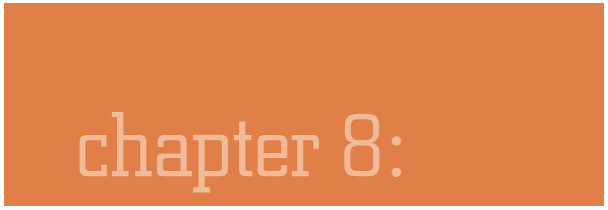296


Intelligence and Academic Achievement
297
- What Is Intelligence?
- Intelligence as a Single Trait
- Intelligence as a Few Basic Abilities
- Intelligence as Numerous Processes
- A Proposed Resolution
- Review
- Measuring Intelligence
- The Contents of Intelligence Tests
- The Intelligence Quotient (IQ)
- Continuity of IQ Scores
- Box 8.1: Individual Differences Gifted Children
- Review
- IQ Scores as Predictors of Important Outcomes
- Review
- Genes, Environment, and the Development of Intelligence
- Qualities of the Child
- Influence of the Immediate Environment
- Influence of Society
- Box 8.2: Applications A Highly Successful Early Intervention: The Carolina Abecedarian Project
- Review
- Alternative Perspectives on Intelligence
- Review
- Acquisition of Academic Skills: Reading, Writing, and Mathematics
- Reading
- Box 8.3: Individual Differences Dyslexia
- Writing
- Mathematics
- Mathematics Anxiety
- Box 8.4: Applications Mathematics Disabilities
- Review
- Reading
- Chapter Summary
298
Themes
 Nature and Nurture
Nature and Nurture
 The Active Child
The Active Child
 Continuity/Discontinuity
Continuity/Discontinuity
 Mechanisms of Change
Mechanisms of Change
 The Sociocultural Context
The Sociocultural Context
 Individual Differences
Individual Differences
 Research and Children’s Welfare
Research and Children’s Welfare
 n 1904, the minister of education of France faced a problem. France, like other western European and North American countries, had recently introduced universal public education, and it was becoming apparent that some children were not learning well. Therefore, the minister wanted a means of identifying children who would have difficulty succeeding in standard classrooms, so that they could be given special education. His problem was how to identify such children.
n 1904, the minister of education of France faced a problem. France, like other western European and North American countries, had recently introduced universal public education, and it was becoming apparent that some children were not learning well. Therefore, the minister wanted a means of identifying children who would have difficulty succeeding in standard classrooms, so that they could be given special education. His problem was how to identify such children.
One obvious way was to ask teachers to indicate which students in their classrooms were encountering difficulty. However, the minister worried that teachers might be biased in their assessments. In particular, he was concerned that some teachers would be prejudiced against poor children and would claim that those children were unable to learn, even if they actually could. He therefore asked Alfred Binet, a French psychologist who had studied intelligence for 15 years, to develop an easy-to-administer, objective test of intelligence.
The prevailing view at the time was that intelligence is based on simple skills, such as associating objects with the sounds they make (e.g., ducks with quacking, bells with ringing), responding quickly to stimuli, and recognizing whether two objects are identical. According to this view, children who are more adept than their peers at such simple skills learn more quickly and thus become more intelligent. The theory was plausible—but wrong. It is now clear that simple skills are only modestly related to broader, everyday indicators of intelligence, such as school performance.
Binet’s theory differed from the prevailing wisdom of his time. He believed that the key components of intelligence are high-level abilities, such as problem solving, reasoning, and judgment, and he maintained that intelligence tests should assess such abilities directly. Therefore, on the test that he and his colleague Théophile Simon devised—the Binet-Simon Intelligence Test—children were asked (among other things) to interpret proverbs, solve puzzles, define words, and sequence cartoon panels so that the jokes made sense.
Binet’s approach was successful in identifying children who would have difficulty learning from classroom instruction. More generally, children’s performance on the Binet-Simon test correlated highly not only with their school grades at the time of testing but also with their grades years later. The test was also successful in establishing a goal of intelligence testing that has been pursued ever since—to provide an objective measure of scholastic aptitude that would allow fairer decisions about children’s schooling, including which children should be in honors classes, which are in need of special education, which should be admitted to highly selective colleges, and so on.
In addition to the practical impact of his test, Binet’s theoretical approach to intelligence has continued to influence research on the topic to this day. In most areas of cognitive development—perception, language, conceptual understanding, and so on—the emphasis is on age-related changes: the ways in which younger children differ from older ones. Following Binet’s lead, however, research on intelligence has focused on individual differences—on how and why children of the same age differ from one another, and on the continuity of such individual differences over time. The nature of individual differences is an enduring theme throughout the field of child development, but the focus on it is especially intense in the study of intelligence.
Questions regarding the development of intelligence excite strong passions, and no wonder. Research in this area raises many of the most basic issues about human nature: the roles of heredity and environment, the influence of ethnic and racial differences, the effects of wealth and poverty, and the possibility of improvement. Almost everyone has opinions, often heartfelt ones, about why some people are more intelligent than others.
299
Intelligence research also has added greatly to understanding all the major themes emphasized in this book: the nature and origins of individual differences, the contributions of the active child and of the sociocultural context, the way in which nature and nurture together shape development, the degree of continuity in a key human trait, the mechanisms that produce changes, and the relation between research and children’s welfare. Before examining research on the development of intelligence, however, we must examine a question that sounds simple but actually lies at the heart of many controversies: What is intelligence?